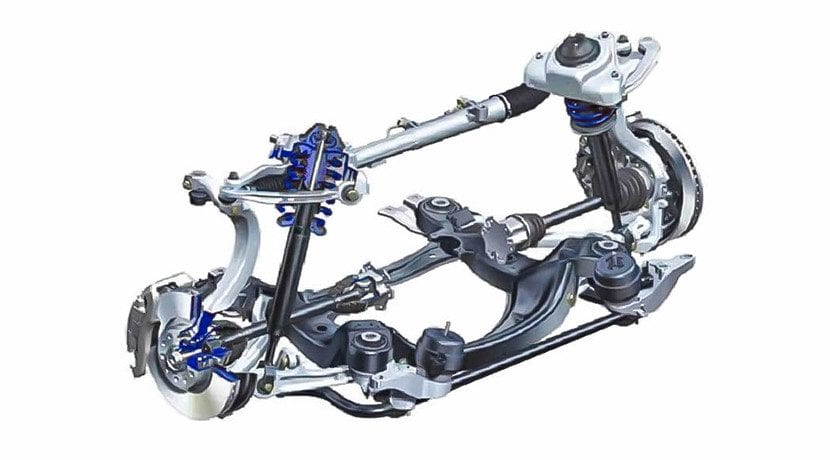
Although many forget it, the suspension is one of the most important elements of our car. Thanks to it, the vehicle can maintain stability and comfort in various circumstances. However, not all suspensions are the same. This time we are talking about the multi-link suspension or multi-link. One of the best solutions to achieve stability, agility and comfort.
It is included within the independent suspensions. That is, in which the movements of the suspension of one wheel do not affect those of the other. It is common to find them both front and rear axle.
What is it and how it works
The key concept of this type of suspension is that it has several independent arms. Thanks to them, it is able to keep the wheel in the right place throughout the suspension travel and, in the case of directional wheels, whatever its orientation. There are many variants of the multi-link suspension. As many as manufacturers and models, which have their own peculiarities and needs. However, they all have common characteristics in terms of their operation.
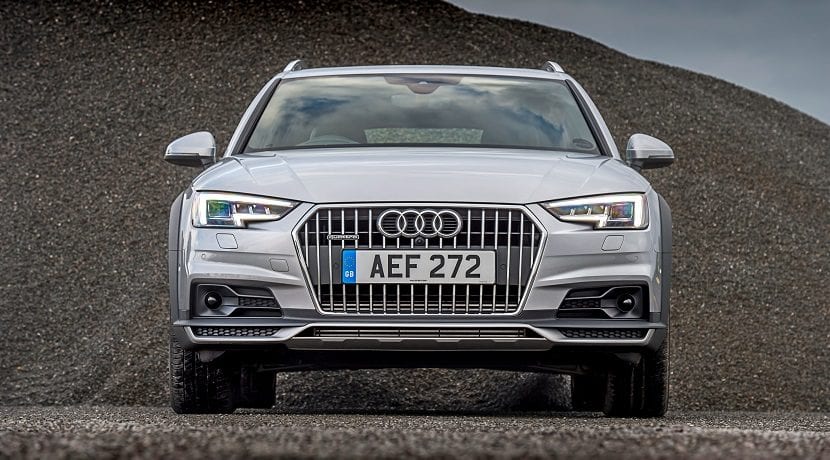
Review of the McPherson suspension
To understand how a multi-link suspension works and what they add to the dynamics of the car, the best thing to do is visualize what happens to the car wheel as the suspension contracts and stretches. Imagine that the car wheel goes up and down thanks to the shock absorber, but it is fixed to the car with a single lower arm. That is, one McPherson strut. The result is that the wheel cannot move completely vertically throughout the suspension travel, because that arm forces it to move up and down in an arc.
If you still don't see it, imagine that arm fixed at one end to one point and to the wheel at another. Since it is fixed to that point, when the wheel goes up or down it can only describe the circumference, in which the arm is the radius and that point is the center of the circle. Well, although the suspension only allows you to describe a small angle of that circumference, it is easy to see that the wheel will not be in a completely vertical position always. In the following video you can see how it works in extreme situations and how the wheel is not always in a vertical position:
Review of the suspension of deformable parallelograms
To solve this, deformable parallelogram suspensions were created.. They guide the movement of the wheel by means of two arms or triangles, one lower and one upper. To understand what the advantage is, do the same mental exercise as before, but this time with two parallel arms attached to the car on one side and to the wheel spindle at the top and bottom. The wheel remains almost vertical when going up or down because it no longer does so describing a simple circumference around a point.
This suspension is called deformable parallelogram because, seen from the front, both arms (or triangles) and the spindle form a parallelogram that deforms when raising and lowering the suspension. It is also called superimposed triangles because the upper and lower arms are usually two triangles attached to the car at two points and to the spindle at one.
And finally the multi-link suspension
Well, once you know these types of suspension, you are ready to understand the multi-link. In its versions with four or five arms, it is an evolution of the deformable parallelogram suspension or superimposed triangles. Only that in the case of the multilink, each triangle is formed by two independent arms (adding four), to which another fifth control arm can be added.
The fact that each triangle is divided into two independent arms allows to configure the movement of the wheel more exactly for the needs of the model in question. In the following section of advantages and disadvantages you can see what it brings to have several arms in the suspension.
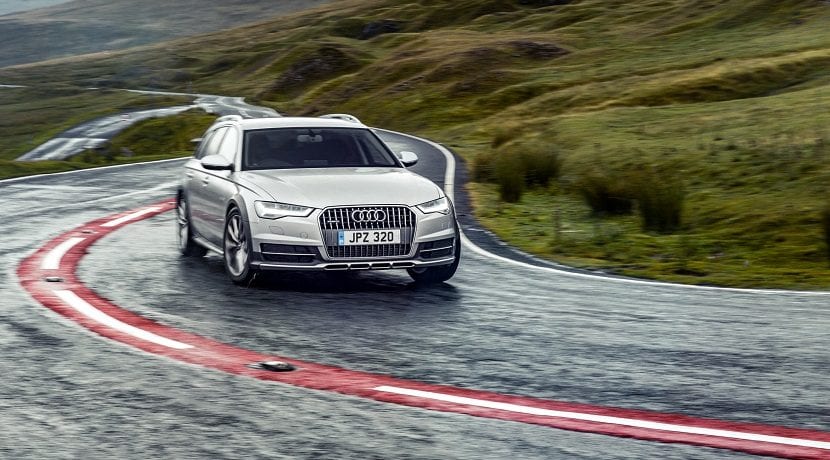
Advantages and disadvantages
ideal wheel position
Precisely the fact that it has several arms is what gives it its main virtue: that the wheel is in the ideal position at all times. The strategic placement of his arms allows him to very effectively control the angle of camber and toe-out of the wheel. While with a superimposed triangle suspension the position of the wheel is what it is, with the independent arms you can play more with the placement to vary its position as it turns, goes up or down.
Maneuverability and safety at the wheel
Also, if it's on the steer wheels, the multi-link suspension allows the wheel changes direction on itself, not over a point outside of it. In McPherson type suspensions, the change of direction of the wheel is done on an imaginary axis outside of it, which coincides with the shock absorber. For this reason, if we compare this type of suspension with others, we can say that the multi-link suspension guarantees better maneuverability and safety at the wheel. In the following video you can see how he achieves this in a mockup:
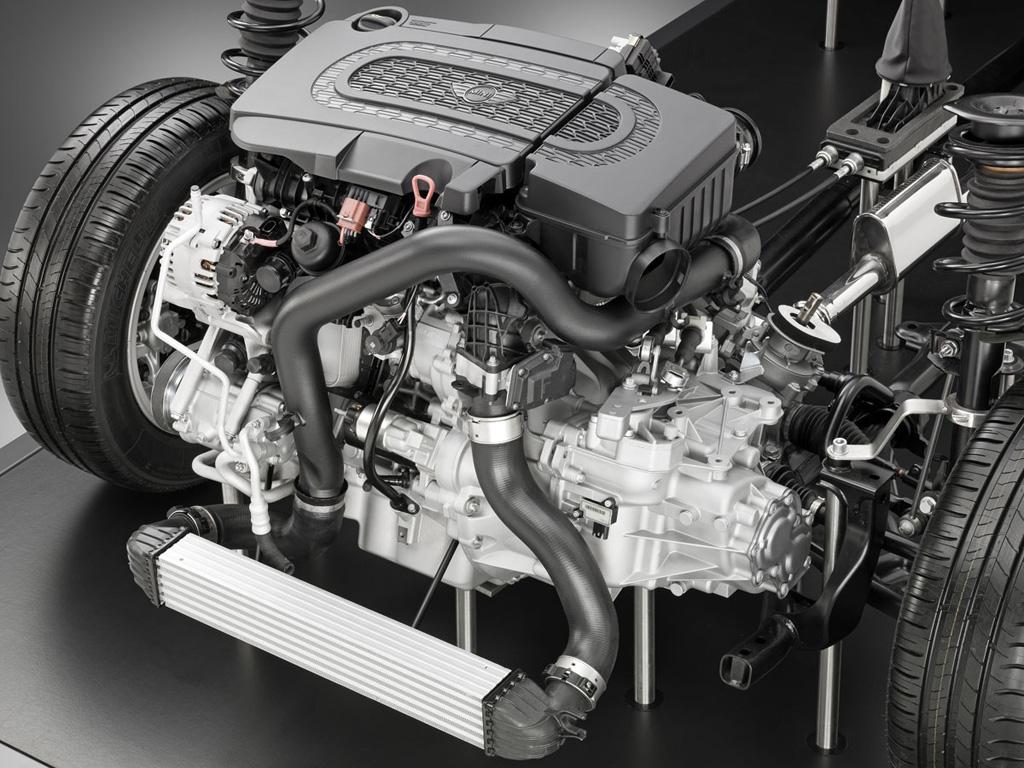
ride comfort
Another advantage is that you can absorb a very high percentage of noise and vibration, which ensures better ride comfort. Each arm is linked to the other components by silent blocks. But it is that in addition, the configuration of separate arms, instead of triangles, allows a high absorption of longitudinal vibrations (from front to back) and a great firmness in transverse movements (from side to side). This gives it great comfort, while achieving great guiding precision.
In addition, the spring can be placed separately from the shock absorber. In this way, if necessary, they are placed in different places to achieve better operation of the entire multi-link suspension scheme.
expensive and complicated
However, it can also be said that the multi-link suspension has a higher cost than other types of suspension. Furthermore, it is about a much more complex scheme, so we can not see it in all vehicles.
Parties
- upper arms: these are the two upper arms that replace the one-piece triangle that the superimposed triangle suspensions carry.
- lower arms: Same as the upper ones but in the lower part. Between the four they achieve the same effect as the superimposed triangle suspensions of keeping the wheel without much variation in camber angle.
- control arm: it is an arm that some suspensions have multi-link to limit the movement of the wheel as desired by the manufacturer.
- Silent blocks: these are the rubber parts that absorb the vibrations and noise of the car running.

- coil spring: as in other suspensions, it is the spring that absorbs the irregularities of the ground and keeps the bodywork suspended. In the case of some multi-link suspensions or multi-link, the spring is separated from the shock absorber (above photo), instead of carrying it inside (main photo).
- Amortiguador: helps the helical spring to absorb irregularities in the ground, but its main function is to eliminate or minimize the rebound effect of the spring.
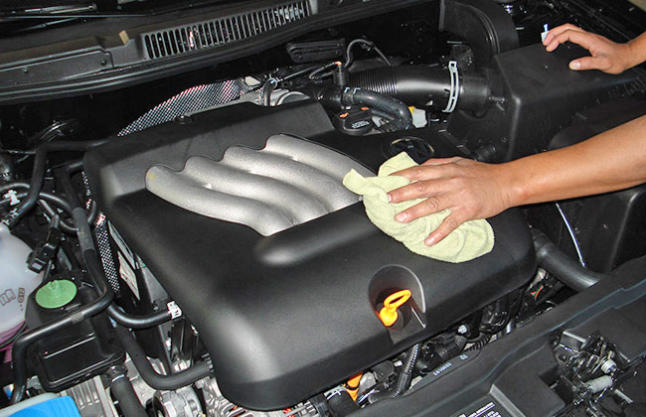
Multi-link suspension Vs. Torsional axle
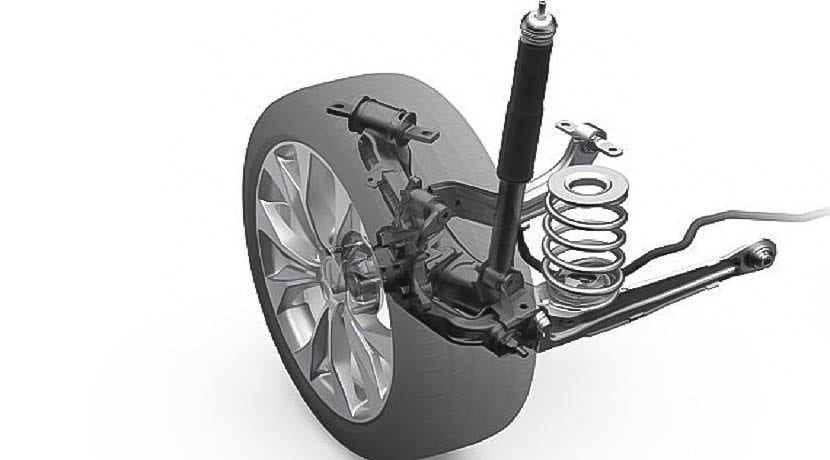
As we have already said, it is very common to find multi-link suspensions both on the front and rear axles. However, in the case of the rear wheels, they are usually seen substituted increasingly by a suspension of torsional axis. This substitution is mainly due to costs and available space. Below we list the advantages and disadvantages of both systems on the rear axle:
multi-arm
Advantages:
- keeps the wheel on the ground more effectively throughout the suspension or steering travel
- insulate better of noise and vibrations
- it's independent, so the movements of one wheel do not affect the other.
Disadvantages:
- supposes more costs manufacturing due to having more elements
- takes up more space, so you lose some of the trunk and/or fuel tank.
torsional axis
Advantages:
- es cheaper because it has less elements
- es easier to manufacture and to ride
- Takes up less space, so the boot and/or fuel tank can be larger. Also Allows you to remove the stabilizer bar, because the torsional axis fulfills that function by itself.
Disadvantages:
- the wheels do not stay on the ground effectively, so the grip is worse in curves and other circumstances
- is not independent, so the movements of one wheel create parasitic movements in the other. This affects the comfort and dynamics of the car negatively.
An example of how some brands have opted for the torsion beam for some of their models is the Volkswagen Group. In the Seat Leon, second generation had rear multi-link axle all its versionsBut third generation just mounted it on the most powerful versions.
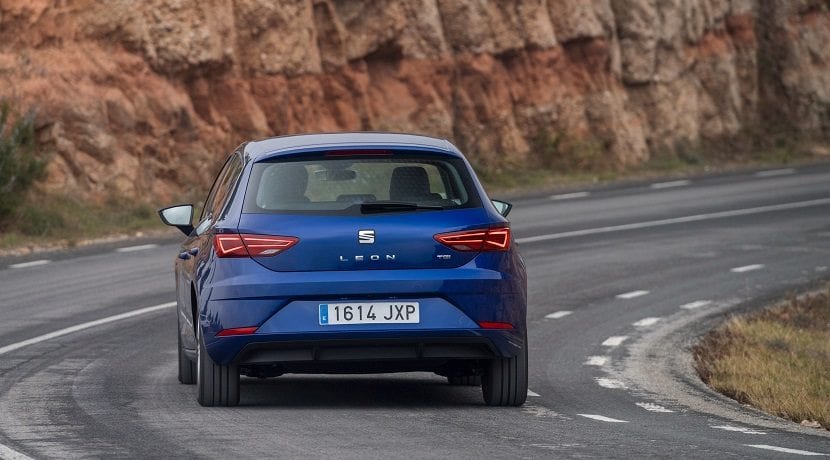
Is there a difference between the two suspensions?
With a quiet driving at normal rates the difference is not noticeable between the multi-link rear suspension or the torsion beam. Only if you drive in a sporty way, you will notice the advantages in disadvantages mentioned above.
However, regardless of the type of driving to be done, the car will behave worse in unforeseen risk situations It does have a torsion beam. This is how it is seen in the typical dodge maneuver, so common in tests carried out on cars to check their dynamic behavior.
No matter how calm you drive, if you have to dodge something to avoid an accident, the car can lose the trajectory more easily if it has a torsion axle instead of a multi-link. Depending on the model, this results in oversteer caused by the rear wheels losing more grip as they can't stay perfectly on the ground.
Excellent explanation, it is clear to me that the cheapest cars will always come equipped with torsion-axle suspension, while the most luxurious or sporty ones will have multi-link suspension.